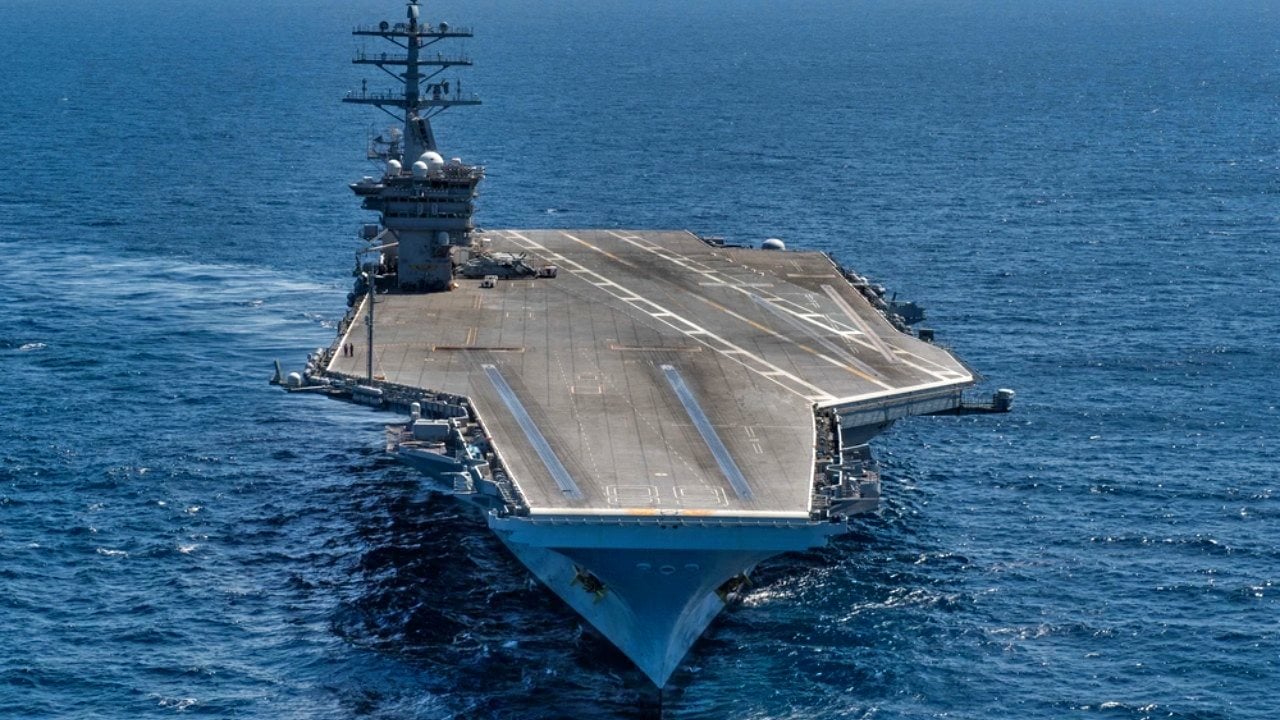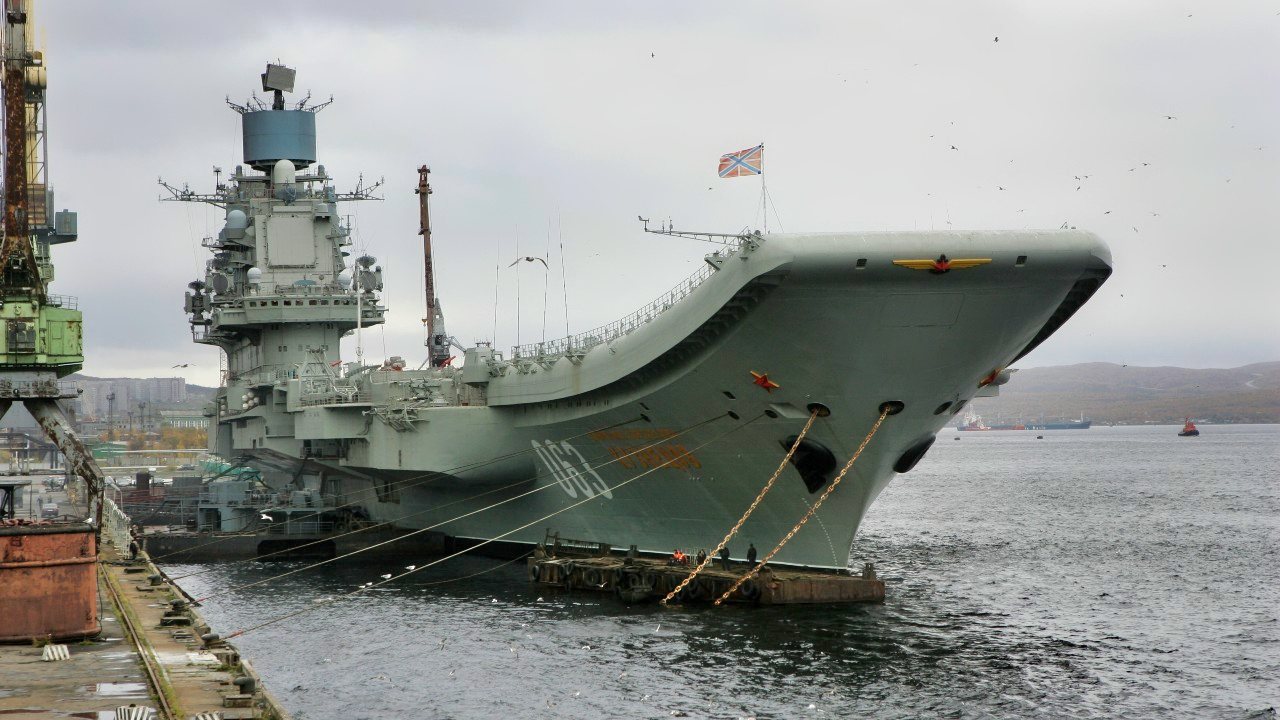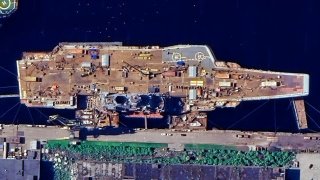Does This Picture Show a U.S. Navy Aircraft Carrier Damaged by a Missile?
Houthi military spokesperson Yahya Saree made dubious claims over the weekend that the Houthi rebels had successfully targeted the USS Dwight D. Eisenhower (CVN-69) in the Red Sea. Following these claims, images purportedly showing damage to the U.S. Navy's Nimitz-class aircraft carrier circulated online that were fake.
Summary and Key Points: Houthi military spokesperson Yahya Saree made dubious claims over the weekend that the Houthi rebels had successfully targeted the USS Dwight D. Eisenhower (CVN-69) in the Red Sea. Following these claims, images purportedly showing damage to the U.S. Navy's Nimitz-class aircraft carrier circulated online.

-However, these images were quickly debunked as they actually depicted the Russian Navy's Admiral Kuznetsov, currently undergoing extensive repairs in Murmansk.
-The Pentagon has denied any damage to the USS Dwight D. Eisenhower. The incident highlights ongoing issues with misinformation on social media, particularly on X (formerly Twitter).
Houthi Claims of Attacking Aircraft Carrier USS Eisenhower Debunked
We'll be the first to suggest it: Houthi military spokesperson Yahya Saree should be dubbed the Lying Yemeni – as his claims are as dubious as those of the now infamous "Baghdad Bob" more than two decades ago. Iraqi Information Minister Mohammed Saeed al-Sahaf earned the nickname "Baghdad Bob," as well as "Comical Ali," for his outrageous claims made during the U.S.-led coalition invasion of Iraq in 2003.
While Saree hasn't declared anything quite as outlandish as "The infidels are committing suicide by the hundreds on the gates of Baghdad," the Houthi rebel mouthpiece claimed twice over the past weekend that the Iranian-back insurgent group had successfully targeted the United States Navy's Nimitz-class nuclear-powered supercarrier USS Dwight D. Eisenhower (CVN-69) in the Red Sea. .
Following those claims, images were posted online that purported to show damage to the U.S. Navy's warship, the second oldest nuclear-powered aircraft carrier in service. An example is at the very top of this post.
"CONFIRMED: uss eisenhower (pictured docked for repairs in souda bay) hit and severely damaged by multiple houthi ballistic missiles. judging by extensive tent city developing on the flight deck, we assess it is unlikely eisenhower will return to service in the foreseeable future," noted @iAmTheWarax on X, the social media platform formerly known as Twitter.
That Image Is Wrong on So Many Levels: No Aircraft Carrier Damage
The image shared on X isn't actually of USS Dwight D. Eisenhower, and it isn't even a Nimitz-class carrier.
Moreover, it isn't even a nuclear-powered vessel, and that's because as many users on social media quickly pointed out, it is the Russian Navy flagship Admiral Kuznetsov, which as The National Interest has reported on multiple occasions is undergoing an odyssey of a refit at the 35th Ship Repair Plant in Murmansk since 2018.

About the only part of the post that was believable and fairly accurate is that the carrier (Admiral Kuznetsov) is unlikely to "return to service in the foreseeable future."
Misinformation and disinformation remain serious problems on X, and the issue has gotten worse since tech entrepreneur Elon Musk acquired the service in late 2022 for $44 billion. Many of the guardrails that attempted to quickly dispel such disinformation have been removed, and it was only thanks to more qualified users that the warship was quickly identified. Now in fairness, it is possible that the original post was made in jest, but it is still hard to tell for certain.
Another giveaway that the photo was a fake was that it suggested that CVN-69 was in Souda Bay on the Greek island of Crete. Here is where there was an inkling of truth – notably that the carrier and elements of her strike group did make a port visit to the port earlier this spring. However, anyone with knowledge of geography or access to a map would quickly point out that it would require transiting the Suez Canal and sailing approximately 4,000 nautical miles. It would take days, and perhaps a week for the carrier to reach that point.
Finally, if the warship had taken any damage and needed repairs it would have almost certainly traveled to Camp Lemonnier, the only permanent U.S. military in Africa.
The Pentagon has denied that the carrier took any damage.
Author Experience and Expertise: Peter Suciu
Peter Suciu is a Michigan-based writer. He has contributed to more than four dozen magazines, newspapers, and websites with over 3,200 published pieces over a twenty-year career in journalism. He regularly writes about military hardware, firearms history, cybersecurity, politics, and international affairs. Peter is also a Contributing Writer for Forbes and Clearance Jobs. You can follow him on Twitter: @PeterSuciu. You can email the author: [email protected].
Image Credit for main image X. All others are Creative Commons.


